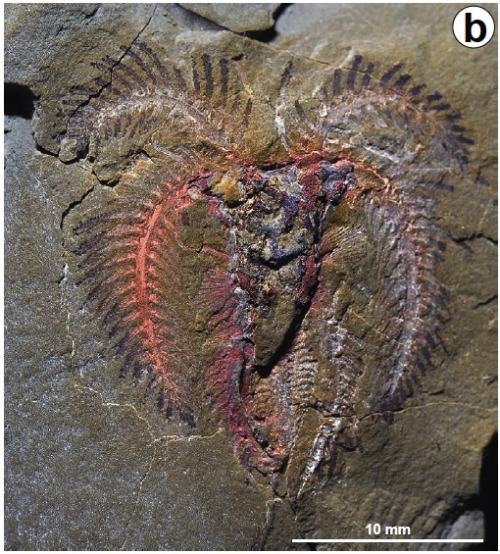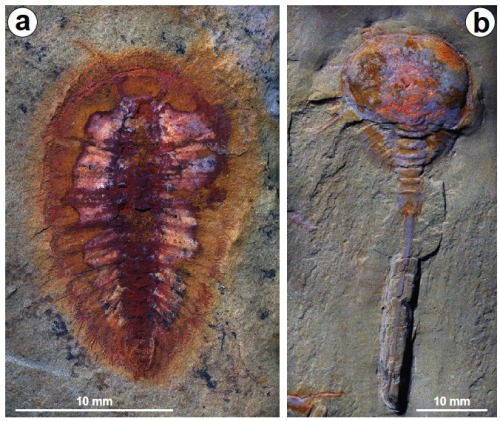Meet the Fezouata BiotaIn 2010, a paper on the Fezouata formation in the Anti-Atlas Mountains of sou
Meet the Fezouata BiotaIn 2010, a paper on the Fezouata formation in the Anti-Atlas Mountains of southeastern Morocco described the unit as a possible Lagerstätte – a location of exceptional fossil preservation including remnants of the soft parts of organisms. These are some of the discoveries in that unit.The Fezouata formation fossils are Ordovician in age, making them just slightly younger than what is likely the world’s most famous example of Lagerstätte; Canada’s Burgess Shale. Therefore, they have already been extremely useful in reconstructing the geologic evolution of a number of species and how Cambrian and Ordovician life connect.The first image shows an animal organism known as Aegirocassis benmoulai. It is one of the oldest discovered filter-feeding organisms in the ocean; there are a few examples of older specimens but they are not nearly as well preserved as this creature. The Ordovician was a time of diversification of ocean-living planktonic organisms; finding this fossil allows scientists to see how predation of planktonic life (a technique still used today by organisms even as large as whales) originally formed in the ocean.The other 2 images show species that have had their fossil origin pushed farther back in time. The left image is a cheloniellid arthropod – an extinct branch of arthropods that is related to trilobites and arachnids but was somewhere in-between and occupies a poorly understood place in the evolutionary tree. Finding this fossil may help better understand its origin and place in the tree.Finally, the last image is a fossil horseshoe crab. This fossil is 25 million years older than any previously discovered horseshoe crab, and finding it commonly within this formation allows scientists to better understand how its fused body parts evolved.The colors are gorgeous, but unfortunately they’re not directly representative of the organisms. These fossils were preserved through a combination of quiet water and chemistry. The organism bodies were locked into mineralized shells after they died from a combination of their own chemistry, interactions with bacteria that consumed the bodies after death, and minerals in the water – most likely supplied from volcanic ashes entering whatever lake system held the organisms. This process also produced pyrite, which stains the fossils red and pink as it weathers.-JBBImage credits: http://dx.doi.org/10.1144/jgs2015-017 (Open access paper)Read more:http://t.co/iP9iw1JSf7 -- source link
Tumblr Blog : the-earth-story.com
#science#geology#fossil#morocco#lagerstätte#preservation#taphonomy#evolution#horseshoe crab#ordovician#cambrian#pyrite#stain#limestone#fossilfriday

